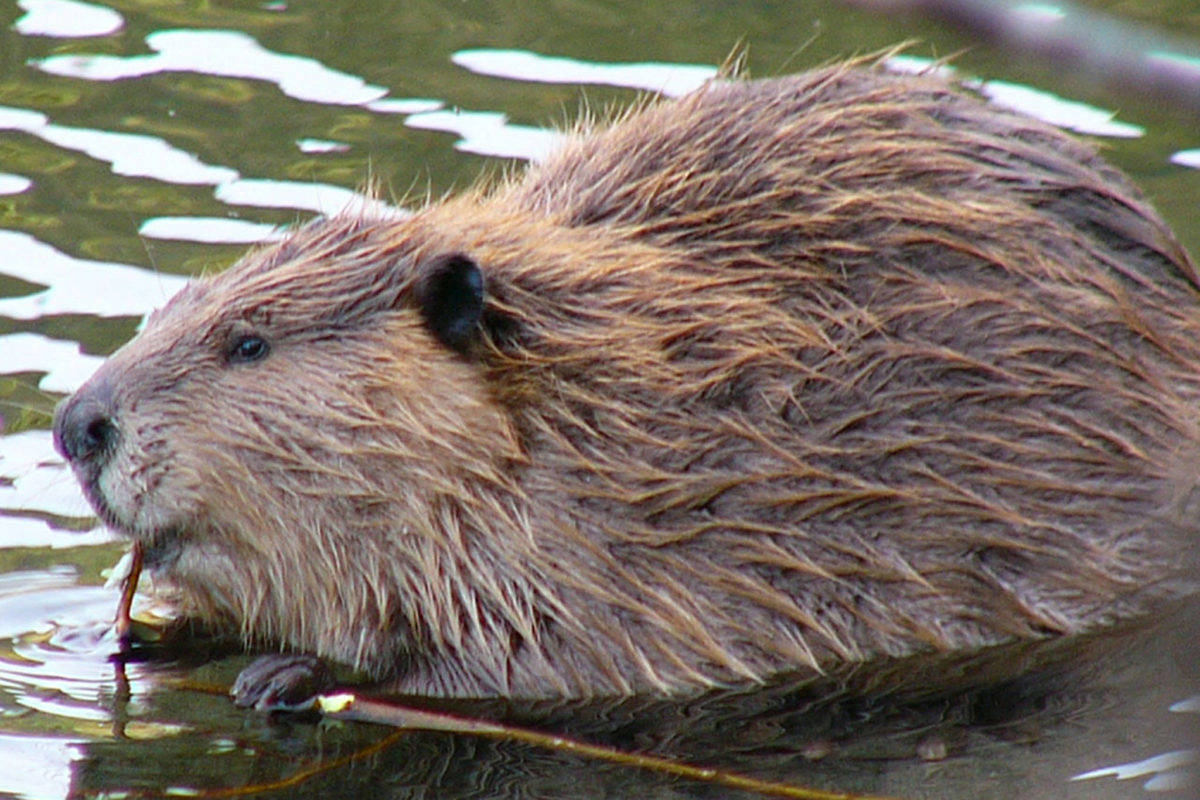By Ned Rozell
Years ago, I worked for a hunting guide on a river in the middle of Alaska. One of my duties was to drive a motorized canoe full of moose meat upstream to a gravel bar where he could fly it out.
When I returned home from that trip, something funny happened: the noises from my abdomen were so loud that my dog barked at them. Though I’m always careful about treating my drinking water, I came back to town with an intestinal parasite known commonly as Giardia.
Here are some facts from the book Giardia and Giardiasis, edited by Stanley Erlandsen of the University of Minnesota and Ernest Meyer of Oregon Health Sciences University:
Giardia is the name commonly used to describe several species of one-celled animals that thrive in an airless environment. One of their favorite anaerobic places is a human’s small intestine, near where it connects to the large intestine.
[Beaver invasion on the Baldwin Peninsula]
Giardia lamblia is the creature that most often knocks humans out for a week or two. It lives in two conditions. One, the trophozoite, looks like a microscopic teardrop. The trophozoite divides by binary fission and makes thousands of copies of itself that attach to the lining of the small intestine.
Trophozoites — so small that dozens of them could line up on the edge of a knife — move with the aid of flagella, described in 1681 as “sundry little paws” by Anton van Leeuwenhoek, a Giardia sufferer who owned a microscope.
Humans pick up the disease by swallowing the resting stage of Giardia, the cyst. Cysts are little tablets that exit an infected animal’s body along with feces. The coating on cysts dissolves within us; the suffering begins.
Animals known to carry Giardia include humans, dogs, cats, beavers, muskrats and bears — and possibly sheep and moose.
Beavers usually get the rap for spreading Giardia (beaver fever), but William Bemrick, a University of Minnesota researcher, said we blame beavers too often. He cited studies on muskrats that showed them to carry even more cysts than beavers that lived nearby.
Bemrick also pointed out that we are pretty efficient at spreading Giardia. Three-hundred million cysts may be present in one milligram of human feces, Bemrick wrote, and these cysts can survive for a month in cool water.
Here’s a way someone might pick up Giardia: A muskrat with Giardia defecates in an Alaska river, releasing millions of cysts that are invisible to the naked eye. You motor a canoe, loaded heavy with bags of moose, upstream. River spray comes over the side of the canoe and wets your face. You lick your lips and swallow a few of the cysts.
A single cyst makes it to your small intestine, morphs to a trophozoite, and divides explosively. In two weeks, enough Giardia have taken up residence to cause a fever, fatigue and diarrhea.
Once you have Giardia, treatment is usually quick with antibiotics, but in some cases it hangs on for months or years. The best plan is to avoid the parasite, especially in rivers and lakes with beavers and muskrats. Boiling water kills the cysts, and filtering water will also remove them.
But if river spray hits you in the face, take these words of advice, sometimes handy in other life situations — keep your mouth shut.
• Since the late 1970s, the University of Alaska Fairbanks’ Geophysical Institute has provided this column free in cooperation with the UAF research community. This year is the institute’s 75th anniversary. Ned Rozell is a science writer for the Geophysical Institute. A version of this column appeared way back in 1998.

